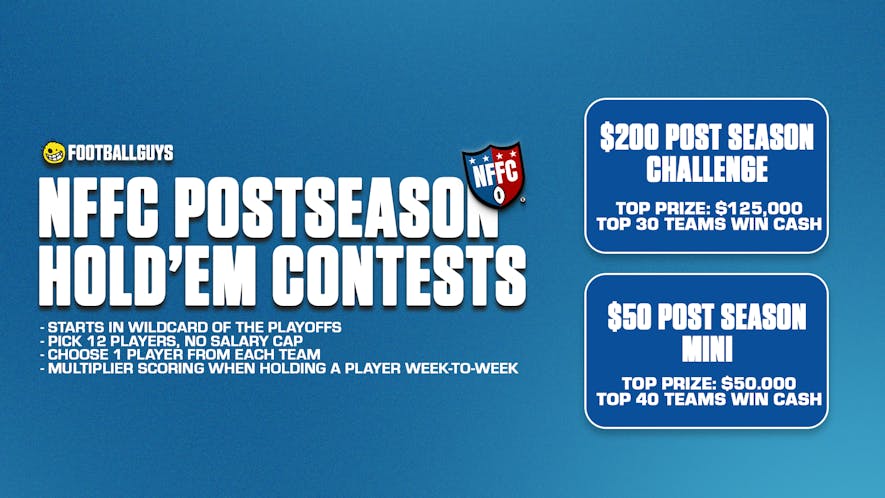There's a lot of strong dynasty analysis out there, especially when compared to five or ten years ago. But most of it is so dang practical— Player X is undervalued, Player Y's workload is troubling, the market at this position is irrational, and take this specific action to win your league. Dynasty, in Theory is meant as a corrective, offering insights and takeaways into the strategic and structural nature of the game that might not lead to an immediate benefit but which should help us become better players over time.
How To Trade Rookie Picks (Well)
In my dynasty leagues, we're fast approaching the point of the season where managers start buying or selling future rookie picks in earnest, as managers with stronger teams look to fortify their rosters for a playoff run, while managers with weaker teams look to buy before competition for future resources gets too intense. To that end, I wanted to talk about how I trade rookie picks.
Long-time readers likely know that I'm a big believer in making dynasty decisions using heuristics— or simple rules of thumb. Research on the subject suggests simple problems are best solved with complex models and complex problems are best solved with simple rules; I went further into this (and discussed where fantasy football fell on the complexity scale) here.
My approach to trading picks is no exception. Over the years, I have identified six heuristics that serve as a starting point for all my negotiations.
Rule #1— Buy during the season, sell during the draft
Draft pick values go through a lifecycle. They peak in value when they're actually on the clock, as owners who desperately want an available talent get tunnel vision and are willing to overpay to get their guy. They reach their nadir during the season, as owners see them offering little immediate value and consider them expendable to patch up holes in starting lineups.
The key mantra in dynasty leagues is always "buy low and sell high". The problem is that, in dynasty as in the stock market, timing is extremely hard. Many managers thought they had reached a peak, selling a player only to see his value continue to rise. Others have thought they were just at the base of the mountain, holding on to a player as the bottom fell out of his value.
In this one case, though, timing the market is very, very easy. We know that draft picks are going to fluctuate in value in a very predictable manner. They have done so every year since dynasty leagues first started. They will probably continue to do so every year until football is no longer played.
Buying low and selling high is hard to pull off with anything except for draft picks. For draft picks, it's as simple as buying during the season and selling during the draft.
Rule #2— Your picks are more valuable to you than to someone else.
I'm generally not a fan of handcuffing in dynasty— I'd rather roster someone else's talented backup than my own untalented one— but I understand the logic to it. Imagine your star is going to miss four games this year. On the one hand, his backup might only have four startable games all year. Another back might have six startable games.
The advantage of handcuffing is one of timing. You know that the four good games from your handcuff will come in the four weeks that you actually need them. The other back might have more good games, but if those games come when your starter is healthy and playing, you'll never benefit from them.
Think of your own future picks like a handcuff running back. If your team is bad, they will be good. If your team is good, they will be bad. Their value is the highest precisely when you need them the most.
If I have my team rated as equal with another manager's team, I will prefer my own first-round pick to theirs, simply because my pick serves as a parachute, ready to open and catch me if I've dramatically misjudged the quality of my squad.
This isn't to say that I wouldn't trade my first round pick. If I really thought I had a great team, I would rather have the first-round pick from someone else's team, instead. This is merely an "all else being equal" consideration. Just like with handcuffing, if faced with two backs of similar quality, it's wise to prefer the handcuff. But you should never take an untalented handcuff over a much more talented backup somewhere else.
Rule #3— Nothing is as durable as it seems
Continue reading this content with a ELITE subscription.
An ELITE subscription is required to access content for Dynasty leagues. If this league is not a Dynasty league, you can edit your leagues here.

